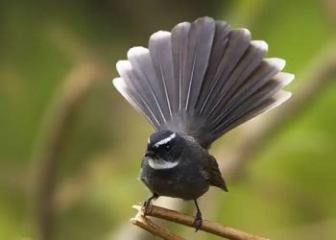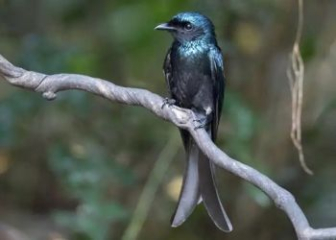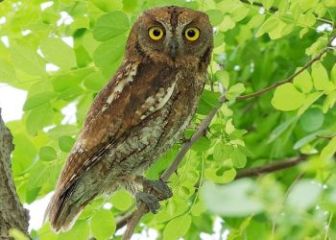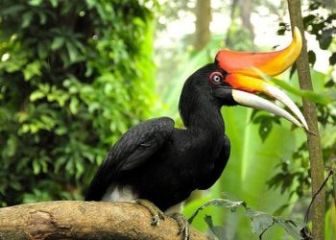Woodpecker - The talented architect of the green forest
Blog | by
Learn about the origin, morphological characteristics, and role of the woodpecker - a bird that stands out thanks to its resounding knocking sound in the forest and its ability to bore into tree trunks to make nests, find food,...
Woodpecker are a group of small birds famous for their echoing pecking sounds in the deep forest. They are considered talented architects of the green forest, not only known for their unique behaviors but also for their important role in the natural forest ecosystem.
With its long, strong beak, long, sticky tongue, and ability to bore into tree trunks to find food, the woodpecker is the perfect representation of life in the trees.
In today's article, let's go deeper with nicebirds to learn more about the origin, habits and interesting things related to woodpeckers.
Origin of woodpecker
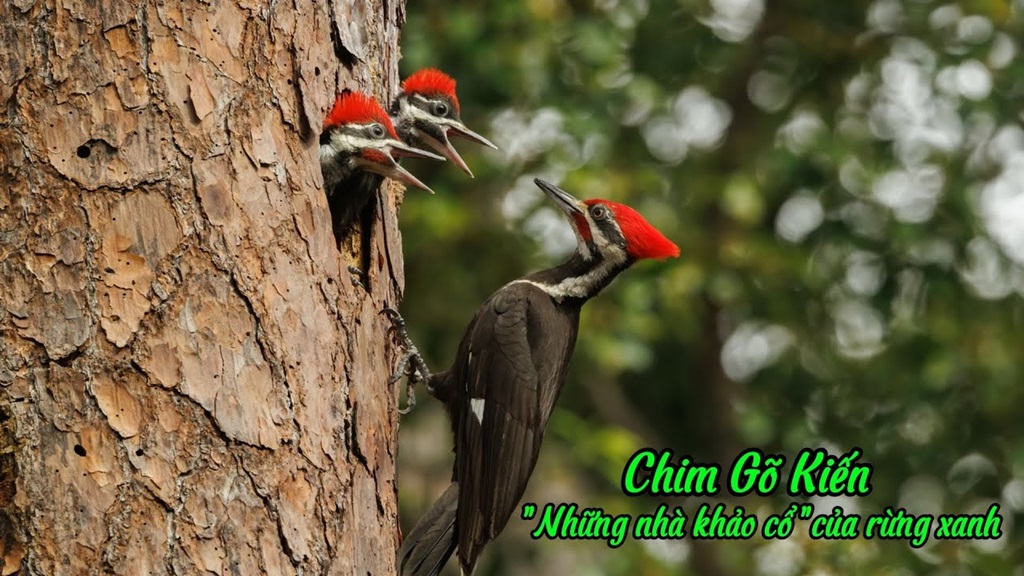
Learn about the origins of the woodpecker.
Woodpeckers are a family of birds in the order Piciformes - a group of tree-climbing birds, including pittas, cormorants and flatbills. This is a very old family of birds, the earliest fossils of woodpeckers were found in Europe 24 - 25 million years ago.
Many studies suggest that the ancestors of woodpeckers originated in Eurasia, North America and then spread globally. Currently, woodpeckers are widely distributed throughout the world except for the following areas:
- Australia
- New Zealand
- Madagascar
- Antarctica
Currently, there are about 230 different species of woodpeckers, divided into many genera such as Picus, Dryocopus, Dinopium, Chrysocolaptes,... In Vietnam alone, with its rich forest ecosystem, about 15 - 20 different species of woodpeckers have been recorded, distributed from North to South.
Physical characteristics of woodpeckers
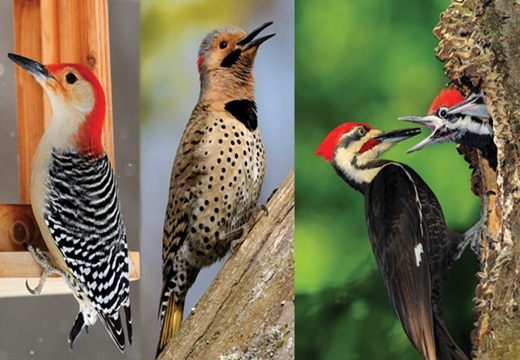
Woodpeckers have long, strong, pointed beaks.
Although there are many different species of woodpeckers today, most of them have the following common physical characteristics:
- Size: From small to large with length from 15 - 45 cm depending on species.
- Body : Slender, upright
- Coat color : Has outstanding colors with typical tones such as green, brown, black, white, yellow and red.
- Tail feathers : Stiff, used to support the body when they stand on tree trunks
- Beak : Straight, long, very strong, has a layer of tissue in the skull to help absorb force when tapping hard so as not to damage the woodpecker's brain.
- Tongue : Very long, twice as long as the head, and will curl around the skull when not in use. The tip of the tongue has small spines and sticky mucus to help them easily catch prey.
- Legs : Short but strong, zigodactyl structure - 2 front toes and 2 back toes, curved, sharp nails for good climbing
- Eyes : Small, round, usually black or dark brown, eyelids tightly closed to protect the eyes from small pieces of wood flying out during pecking at the tree trunk.
Characteristics and behavior of woodpeckers
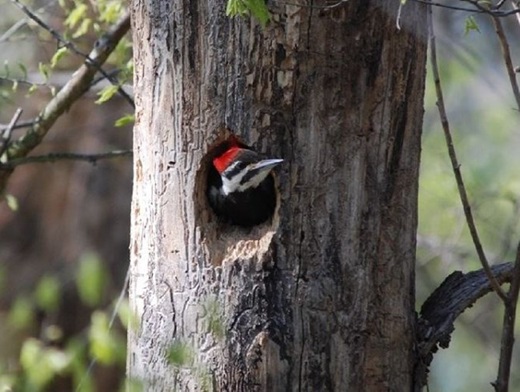
A woodpecker is sticking its head out of its nest.
Woodpeckers have unique habits and behaviors such as tapping on tree trunks, the ability to dig nests and find food under the bark, and many other interesting things to adapt to life in trees. Find out more below.
Knock on the tree trunk
This is probably the most characteristic behavior of the woodpecker family that not all birds have. Woodpeckers will use their strong beaks to tap on tree bark and wood for many different purposes such as:
- Looking for food
- Communicate with your own kind, attract mates
- Nesting
Each species of woodpecker will have a different rhythmic knock, but they are very regular and capable of carrying far.
Foraging under tree bark
Woodpeckers mainly eat insects, ants, larvae, and termites hidden under the bark or in rotten wood. They will use their beaks to bore into the bark, then stick their long, sticky tongues in to catch their prey quickly and accurately.
In addition, some species of woodpeckers can eat small forest fruits, tree sap, and even tree seeds.
Nest by drilling holes in tree trunks
In contrast to other birds that usually make their nests out of grass, straw, dry branches or take advantage of tree cavities, woodpeckers have a very unique way of making their nests by hollowing out tree trunks.
They will choose rotten tree trunks, 3 - 10m high, to make holes to make nests. The nests are usually round, 20 - 50cm deep, and hollow at the bottom.
Male and female birds raise their young together.
During the breeding season, woodpeckers always live in pairs, both building nests, incubating eggs and caring for the young. Each clutch, the female lays 2-5 eggs, then incubates the eggs for 12-15 days. After hatching, the young birds will stay in the nest for 3-4 weeks before leaving the nest to find food.
Move along the trunk
Another special behavior that only appears in the woodpecker family is that they do not perch horizontally on tree branches like other common birds, but will climb along the tree trunk thanks to the special foot structure of 2 front toes - 2 back toes that helps them grip tightly with a stiff tail that acts as a support.
In addition, when flying, woodpeckers often fly in an undulating pattern - a characteristic flight style.
The role of woodpeckers
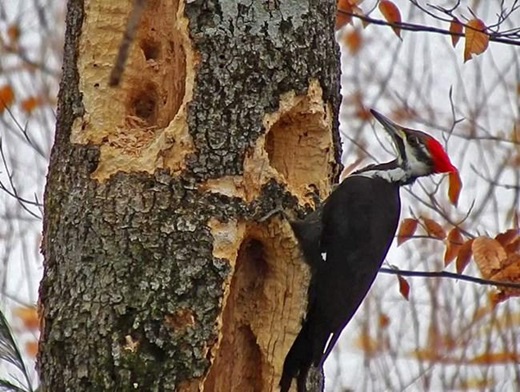
A woodpecker is drilling a hole in a tree trunk.
Woodpeckers are not only beautiful birds, but they also play an extremely important role in the forest ecosystem. Find out more below.
- Pest control: Woodpeckers are natural enemies of many pests such as stem borers, beetle larvae, termites, ants, spiders, etc. Thanks to this bird, it helps reduce plant diseases, protect forests and limit pests in forestry and agriculture.
- Creating habitat for other species: After each breeding season, the “nests” that woodpeckers build in tree cavities will be abandoned and many other creatures will take advantage of them to make nests such as owls, parrots, squirrels, bats, bees, etc. That is why woodpeckers are also called “Ecological architects of the green forest”.
- Forest ecological indicator: The presence of woodpeckers is a sign that the forest is still intact and less invasive because most woodpecker species need large tree trunks and old forests to nest and live.
- Cultural & Inspirational Value: Woodpeckers have appeared in many myths, folk tales and cultural symbols to symbolize perseverance, patience, and even in Norse mythology, this bird is considered a messenger of the forest god.
Common woodpecker species in Vietnam
Currently, in Vietnam, there are many different species of woodpeckers, distributed from mountainous areas, primary forests, orchards to urban areas near forests. Let's learn about some typical woodpecker species below.
Lesser Red-bellied Woodpecker (Dendrocopos Hyperythus)
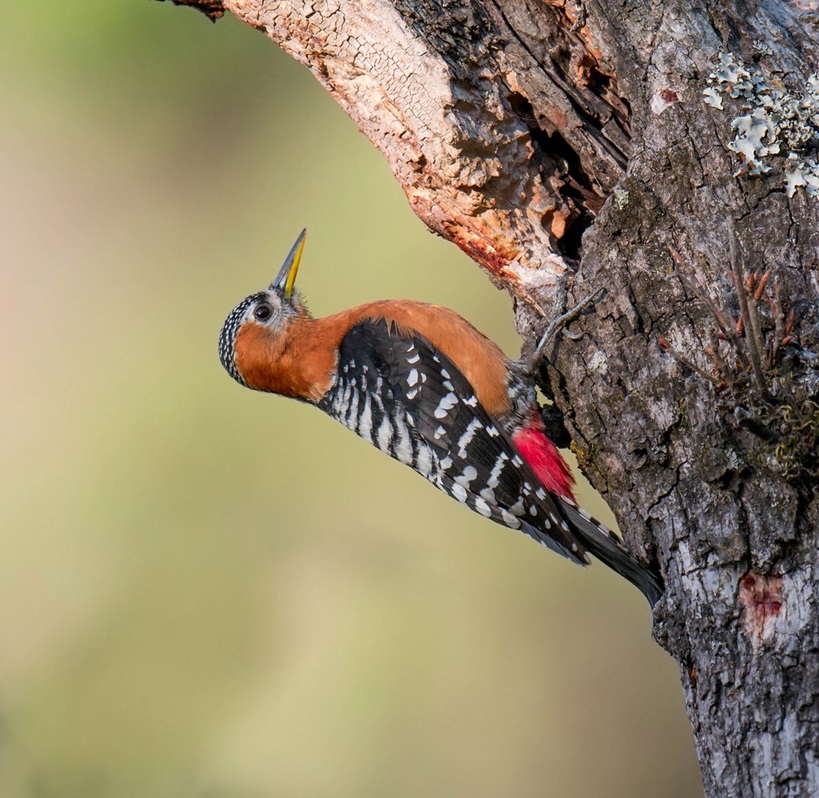
A little red-bellied woodpecker is looking for food.
The Red-bellied Woodpecker, scientifically known as Dendrocopos hyperythrus, is one of the small woodpecker species common in the mountainous regions of the North of our country. They are known for their small appearance but their plumage has contrasting colors when combining two alternating black and white colors and a prominent reddish-brown belly.
General characteristics of the Little Red-bellied Woodpecker:
- Size : 16 - 18 cm, one of the smallest woodpecker species in Vietnam
- Distribution : Vietnam, China, India, Bhutan,...
- Color : Back and wings have alternating black and white patterns, belly is orange-brown, light reddish brown.
- The male bird has a red head, the female bird has a gray-white head.
- Main food: Insects under bark, larvae, ants, seeds,...
- Beak: Long, pointed, ash gray
- Conservation status: Least concern
Red-necked Woodpecker (Blythipicus pyrrhotis)
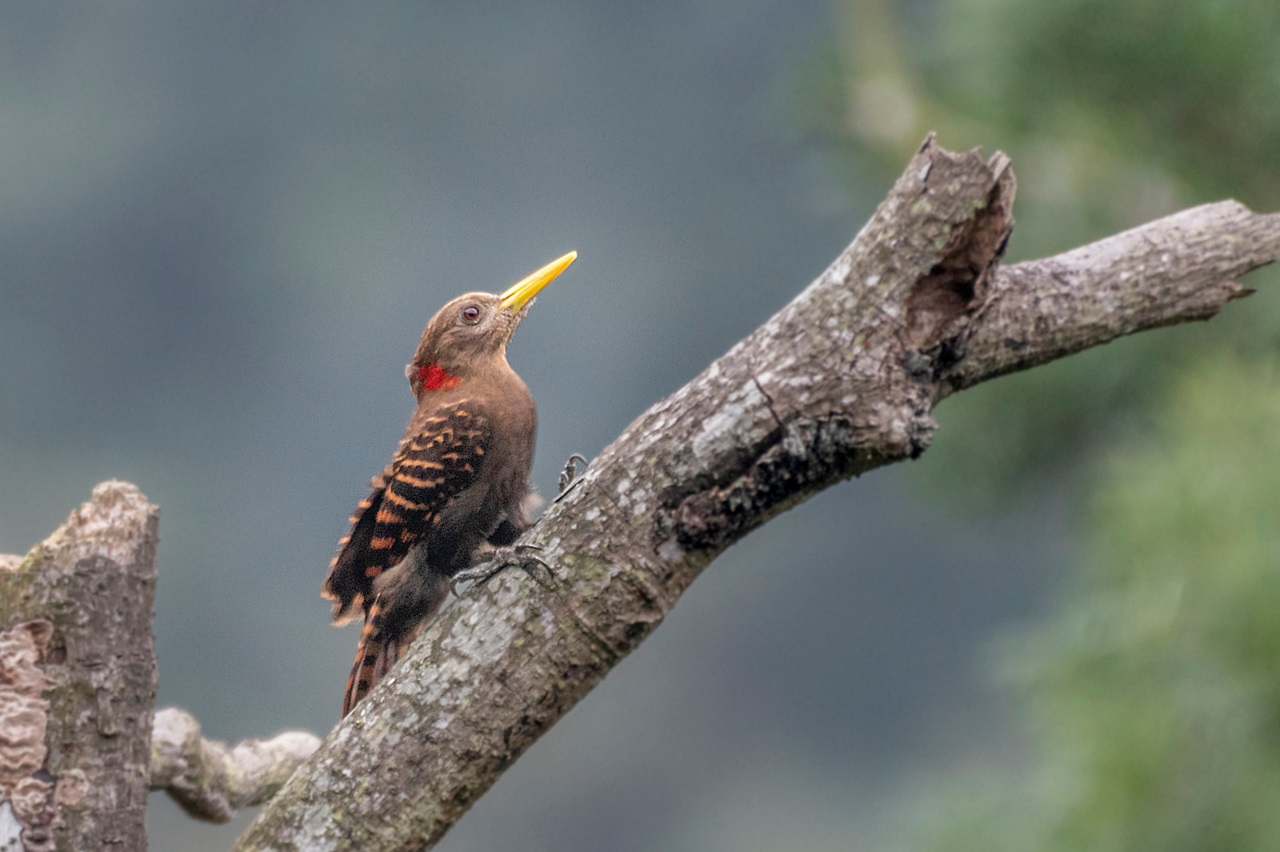
Image of a red-necked woodpecker perched on a tree branch.
The Red Grass Woodpecker, scientifically known as Blythipicus pyrhotis, is a medium-sized woodpecker commonly found in the mountainous regions of Vietnam, especially in the North and Central regions. This bird stands out with its dark brown plumage and characteristic red neck - creating a unique identification mark.
Characteristics of the Red-necked Woodpecker:
- Size: 25 - 27 cm
- Distribution: South Asia, Southeast Asia, North, Northwest, North Central Vietnam
- Coat color: The main color of the body is dark reddish brown, the neck and cheeks are orange-red.
- Beak: Black-gray, pointed, strong
- Main food: Insects, larvae, insects under the bark, occasionally can eat sap and seeds.
- Conservation status: Least concern - LC
Greater Yellow-billed Woodpecker (Chrysocolaptes guttacristatus)
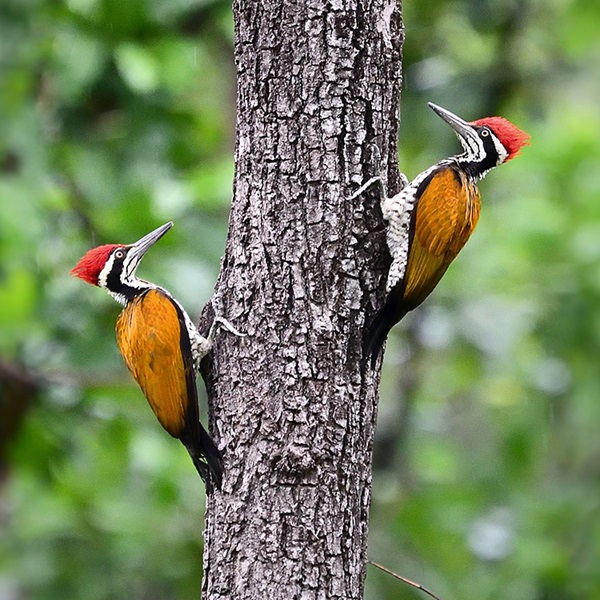
Image of two large yellow woodpeckers.
The Great Yellow Woodpecker, scientifically named Chrysocolaptes guttacristatus, is one of the most colorful woodpeckers in Vietnam with sparkling golden plumage and a bright red crest.
Characteristics of the Great Yellow Woodpecker:
- Size: 30 - 35 cm
- Distribution: South Asia, Southeast Asia, Vietnam
- Feather color: Shiny golden yellow, dark brown wings with white streaks, light brown belly
- The male bird is bright red in colour, the female is dark brown.
- Long, thick, blue-gray beak
- Conservation status: Least concern - LC
White-bellied Black Woodpecker (Dryocopus javensis)
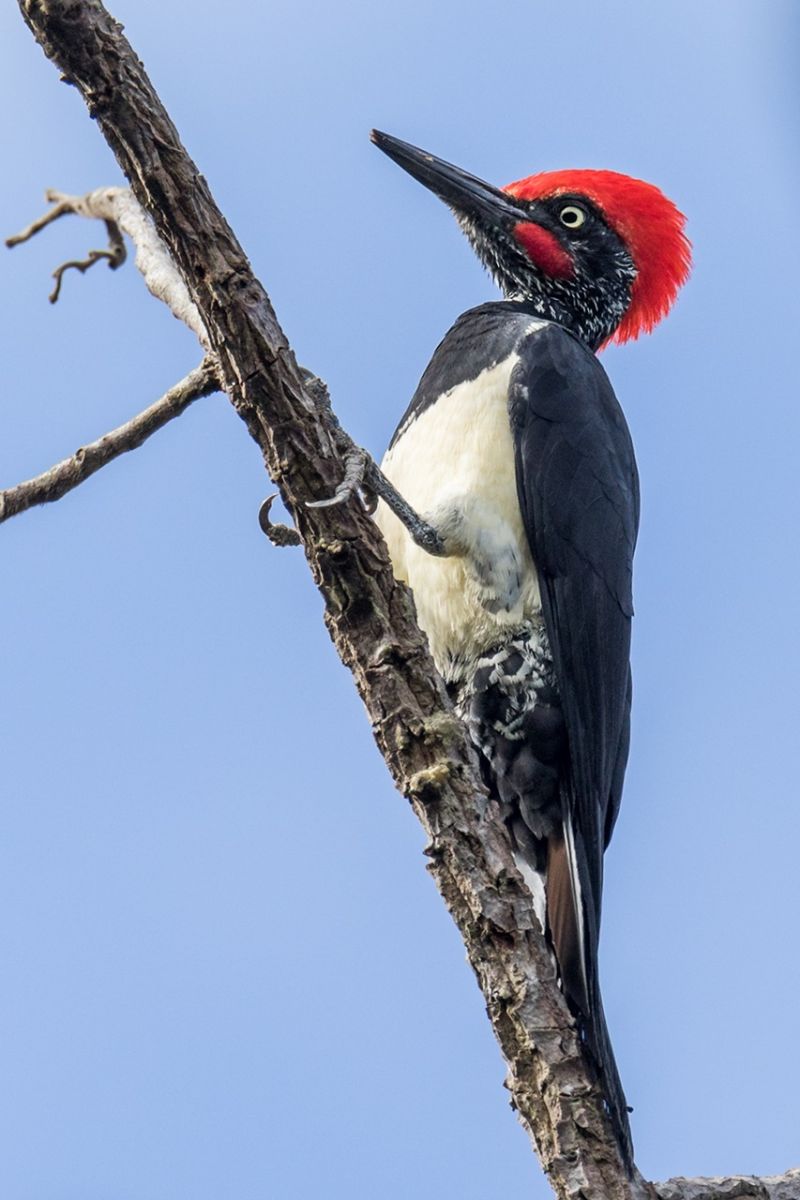
Image of black woodpecker with white belly.
The White-bellied Black Woodpecker (scientific name: Dryocopus javensis) is one of the largest and most special woodpeckers in our country. Possessing contrasting white and black feathers and a loud, far-reaching knocking sound, this bird is a symbol of primeval forests.
Characteristics of the white-bellied black woodpecker:
- Size: 40 - 46 cm
- Distribution: Southeast Asia such as Vietnam, Laos, Thailand,...
- Color: Back, wings, head are jet black, belly is white or gray, both sides of the neck have clear white streaks also known as "spotted neck"
- The male bird has a long bright red crest, the female bird has no red.
- The beak is large, pointed, grey or slightly ivory in colour.
- Conservation status: Least Threatened - LC
Black-naped Woodpecker (Picus canus)
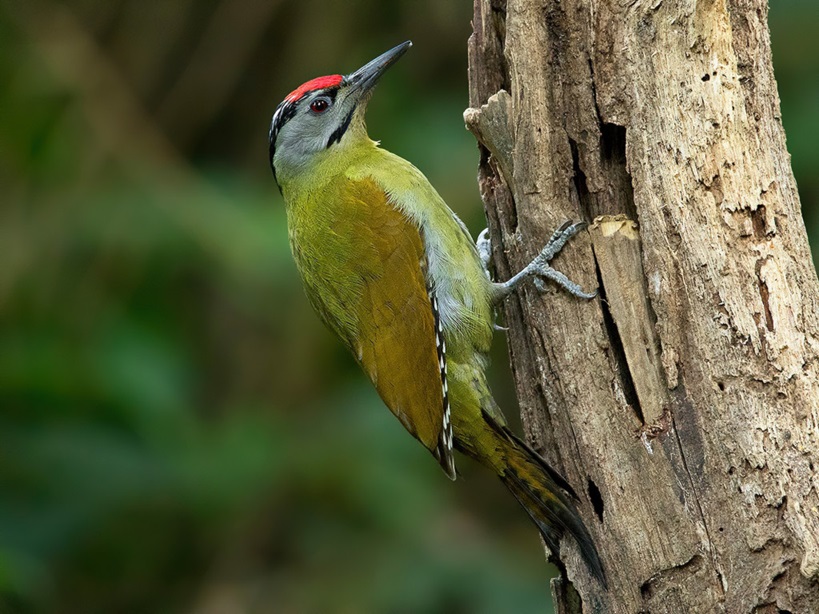
Image of a black-naped woodpecker.
When mentioning the most common woodpecker species in Vietnam, it is impossible not to mention the black-naped green woodpecker (Scientific name: Picus canus). This bird species often appears in secondary forests, suburban forests, besides it also makes an important contribution to controlling forest pests.
Characteristics of black-naped woodpecker:
- Size: 25 - 30 cm
- Coat color: Mainly moss green, head is light ash gray, nape is black
- The male bird has a small red streak on its forehead, the female bird has no red streak.
- Beak: Long, straight, strong
- Legs: Short, 2 front toes - 2 back toes:
- Conservation status: Little concern - LC
Interesting facts about woodpeckers
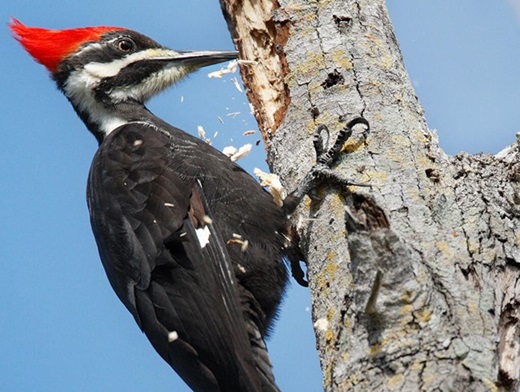
A woodpecker is "frantically" knocking on the tree trunk.
Right below are some interesting facts about woodpeckers that you may not know, let's find out now.
- Woodpeckers can tap on tree trunks 8,000 - 12,000 times a day.
- Although when they tap, woodpeckers create an impact force equivalent to 1000 times gravity, their brains are not shaken thanks to their thick skulls, spongy structure that absorbs shock, along with their elastic beaks and tongues that wrap around the skull to help stabilize the brain when tapping hard.
- Woodpecker tail feathers are very hard like a third leg to help the bird hold itself straight up in trees when climbing and moving.
- The nests and holes that ants make in tree trunks are reused by many other birds and animals.
- Each species of woodpecker has a distinct “knocking sound,” just as each person has a unique voice.
Thus, through the above article, nicebirds.net has shared all the relevant information about woodpeckers - a special family of birds with the ability to tap on tree trunks and move along the tree trunks. Although woodpeckers are not suitable for keeping as pets, they receive the attention of many wild bird lovers because of their beautiful colors and many interesting habits.
Please visit our Blog section to read more articles on other bird topics.
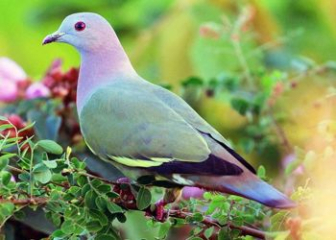
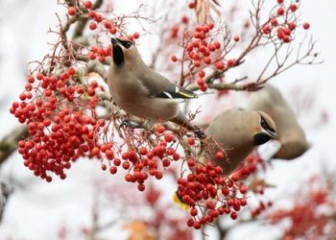

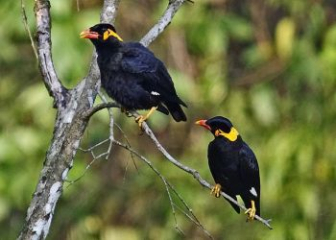
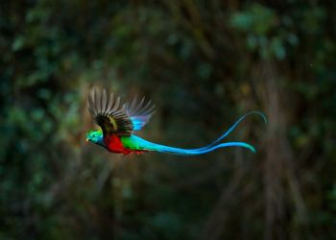

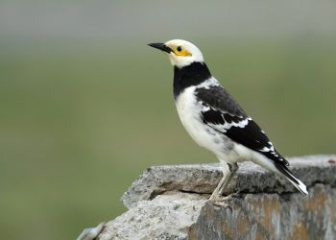
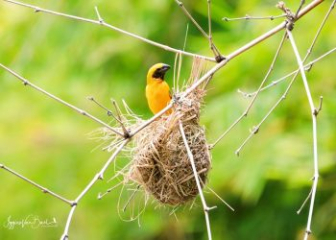
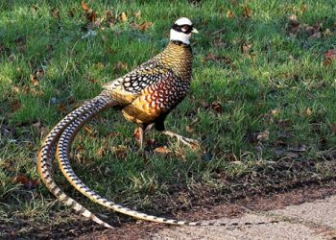
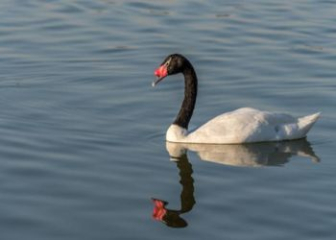
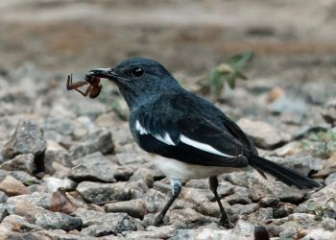
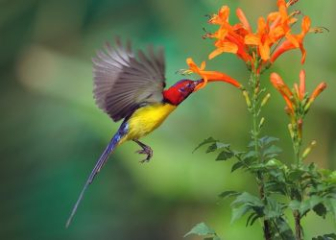
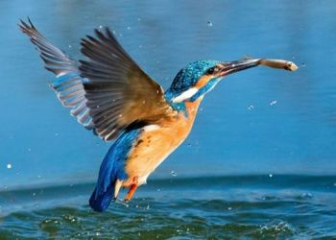
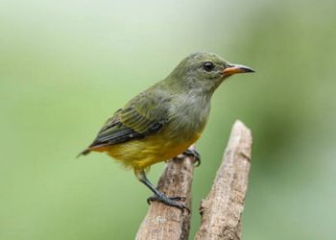
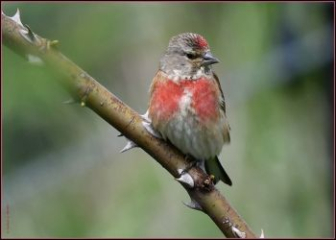
_350x250.jpg)
